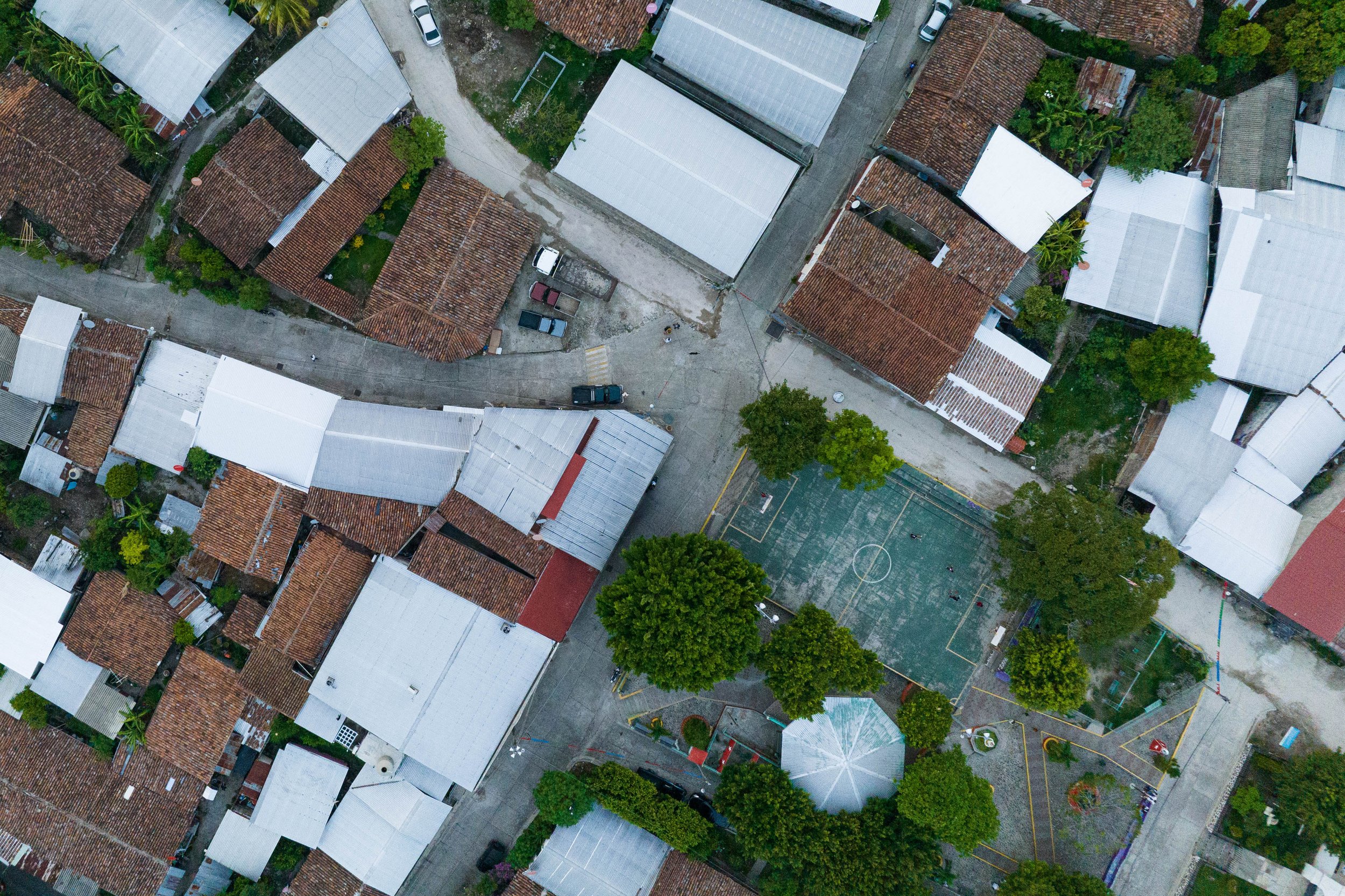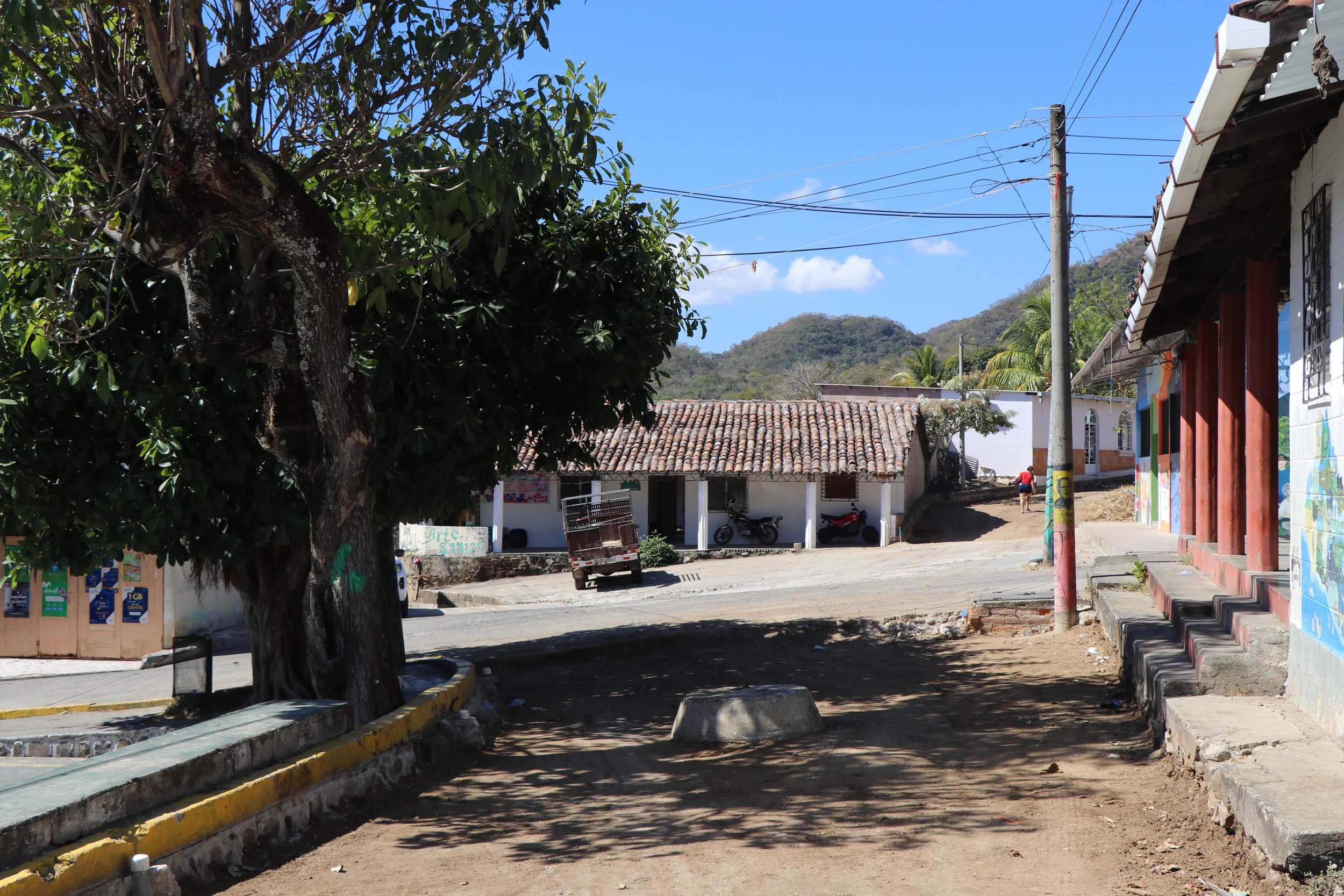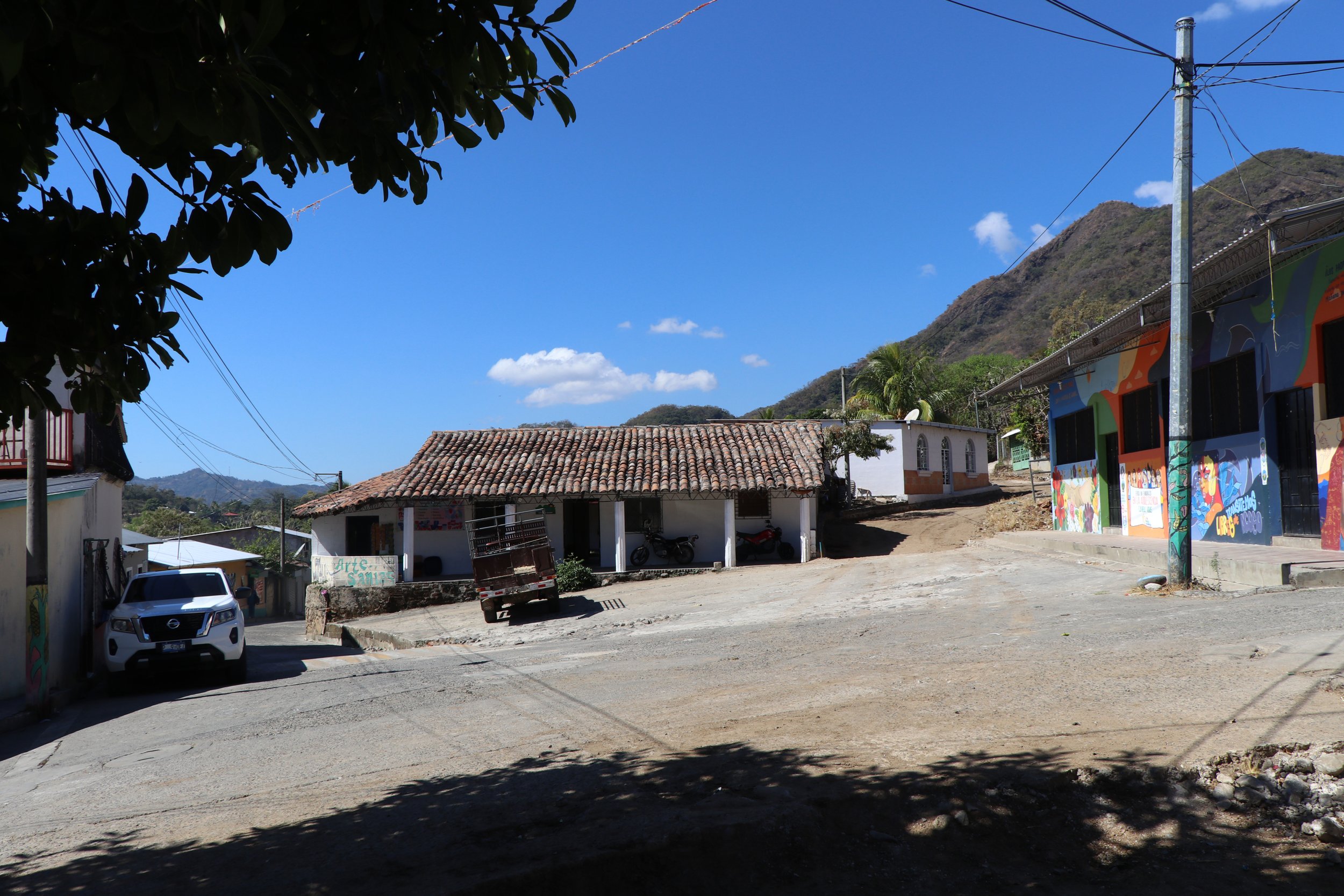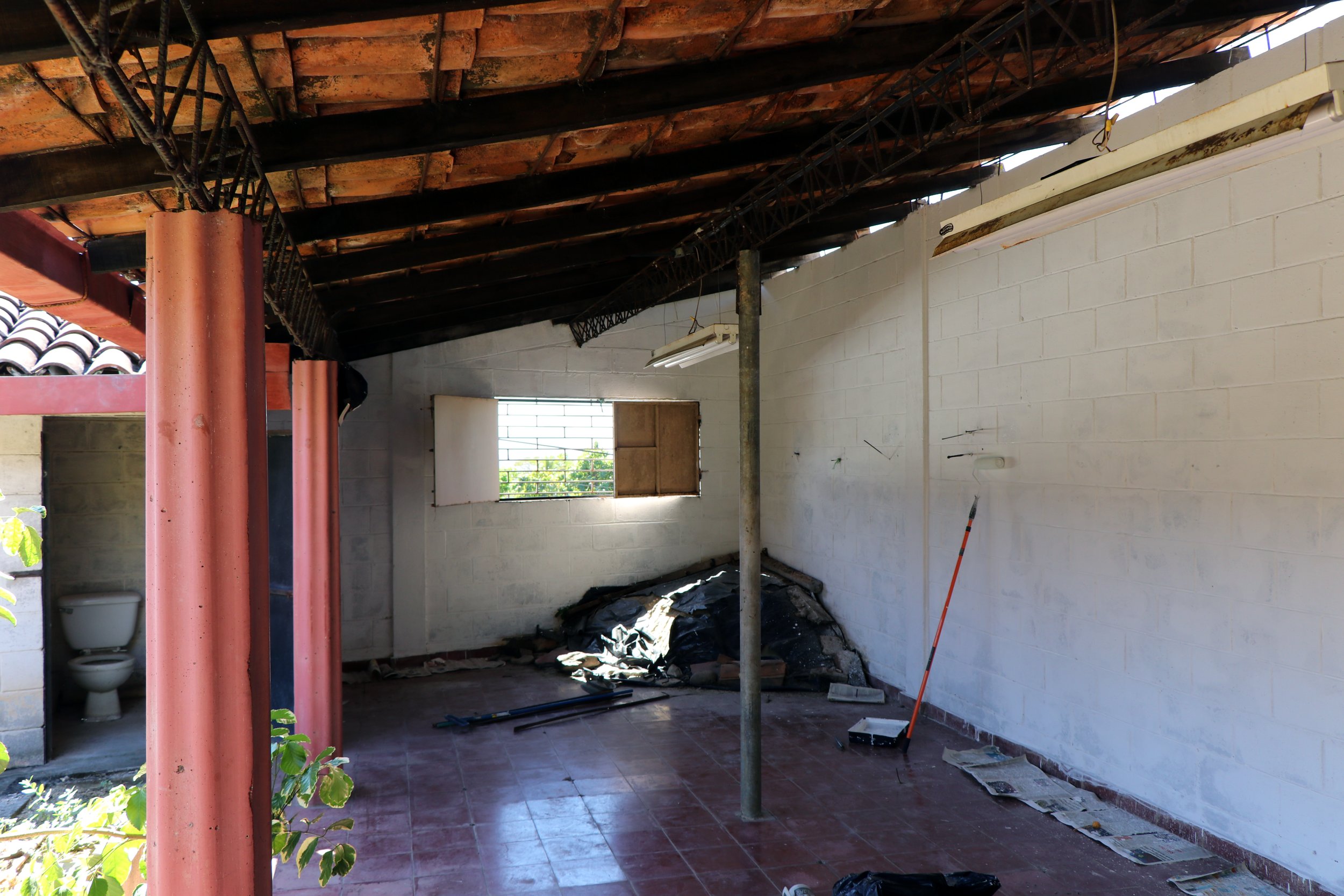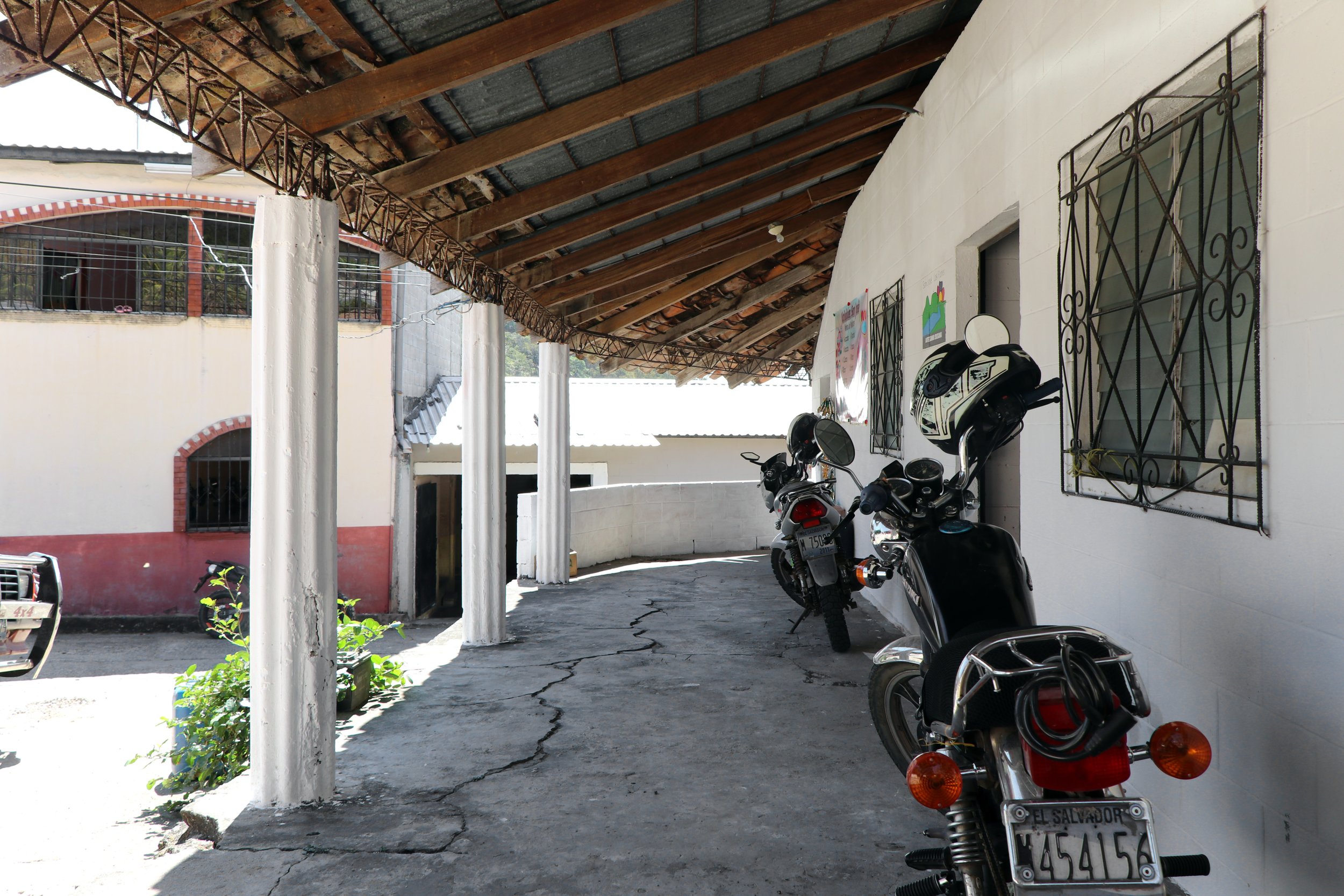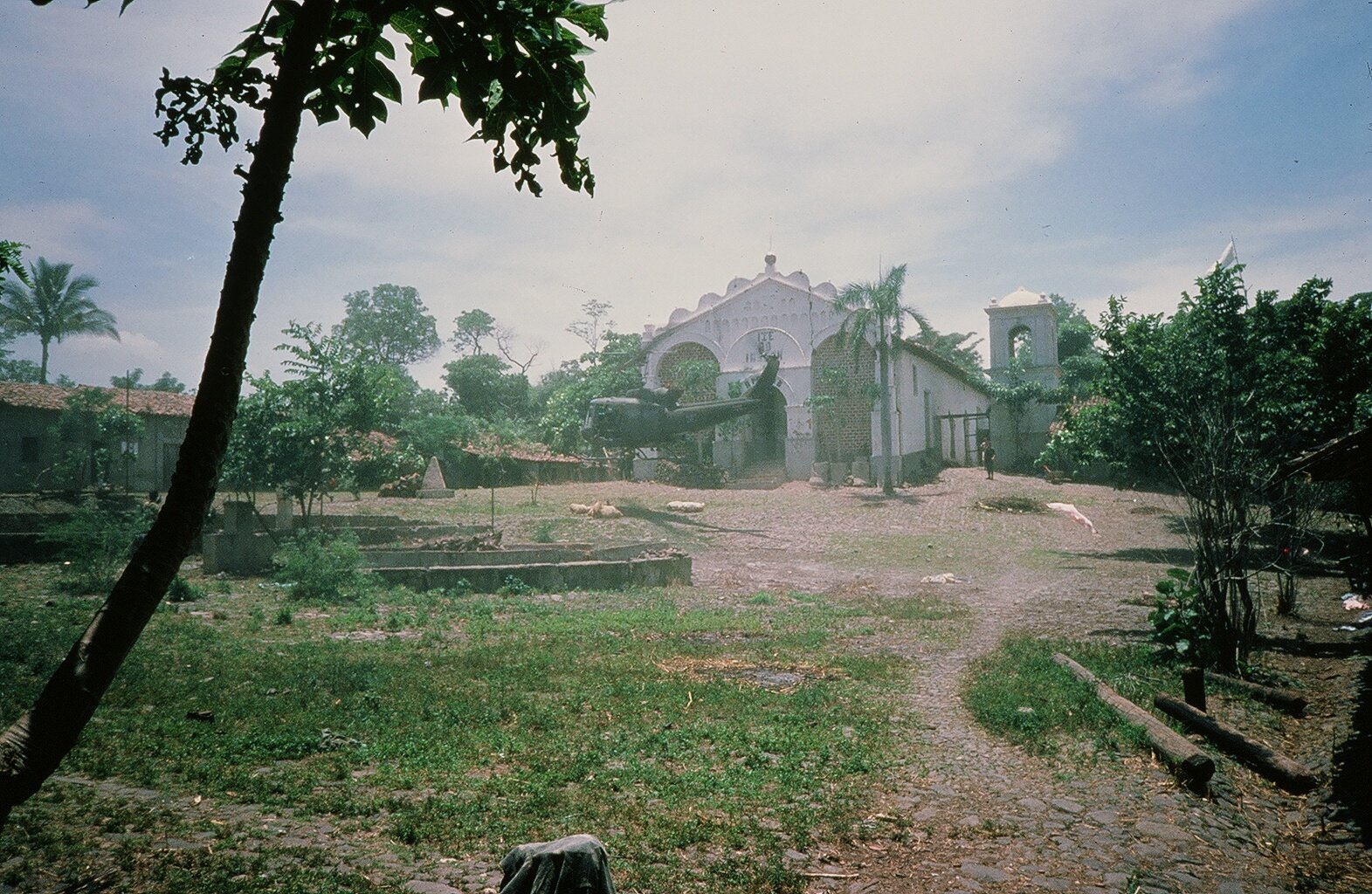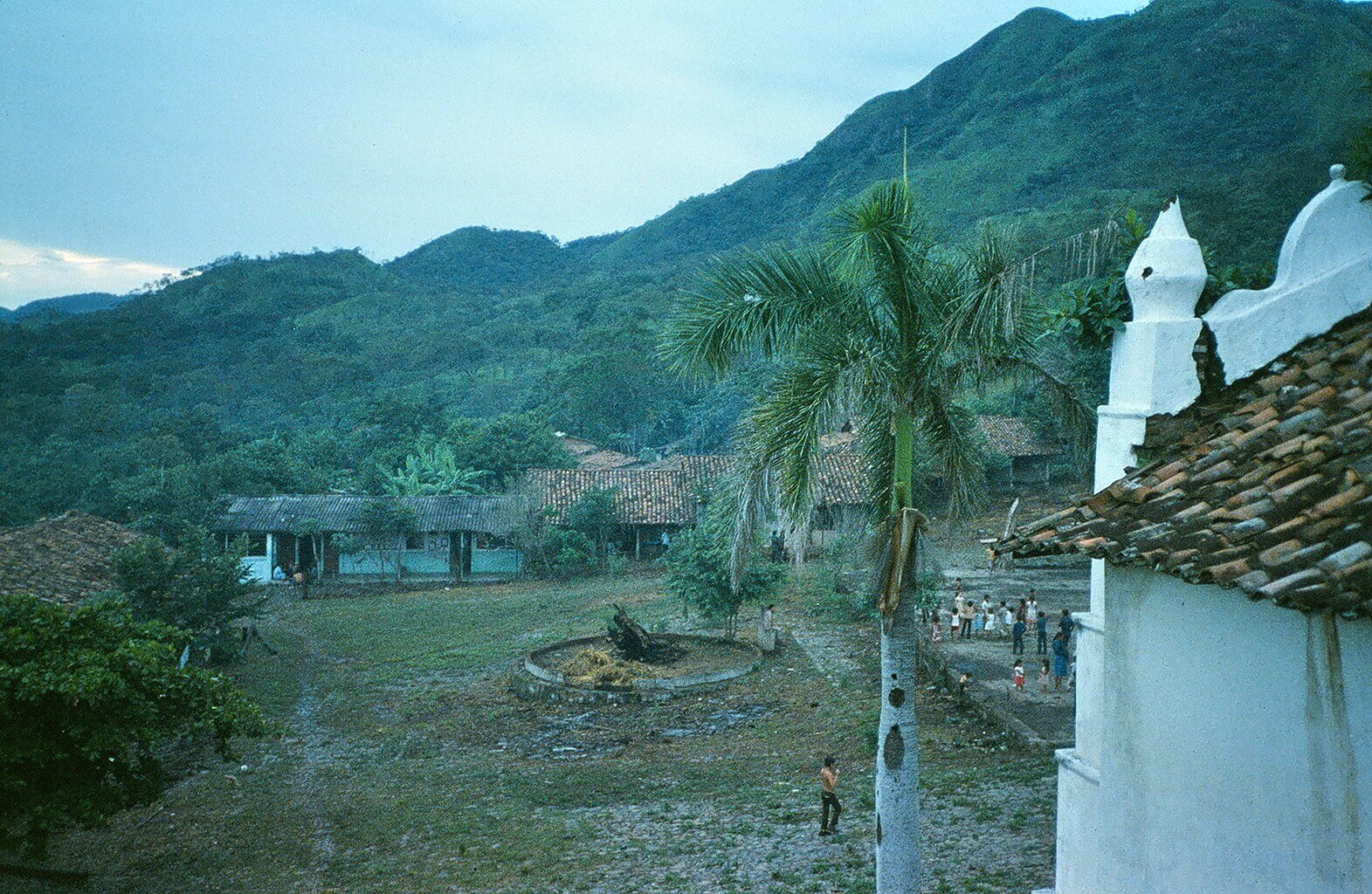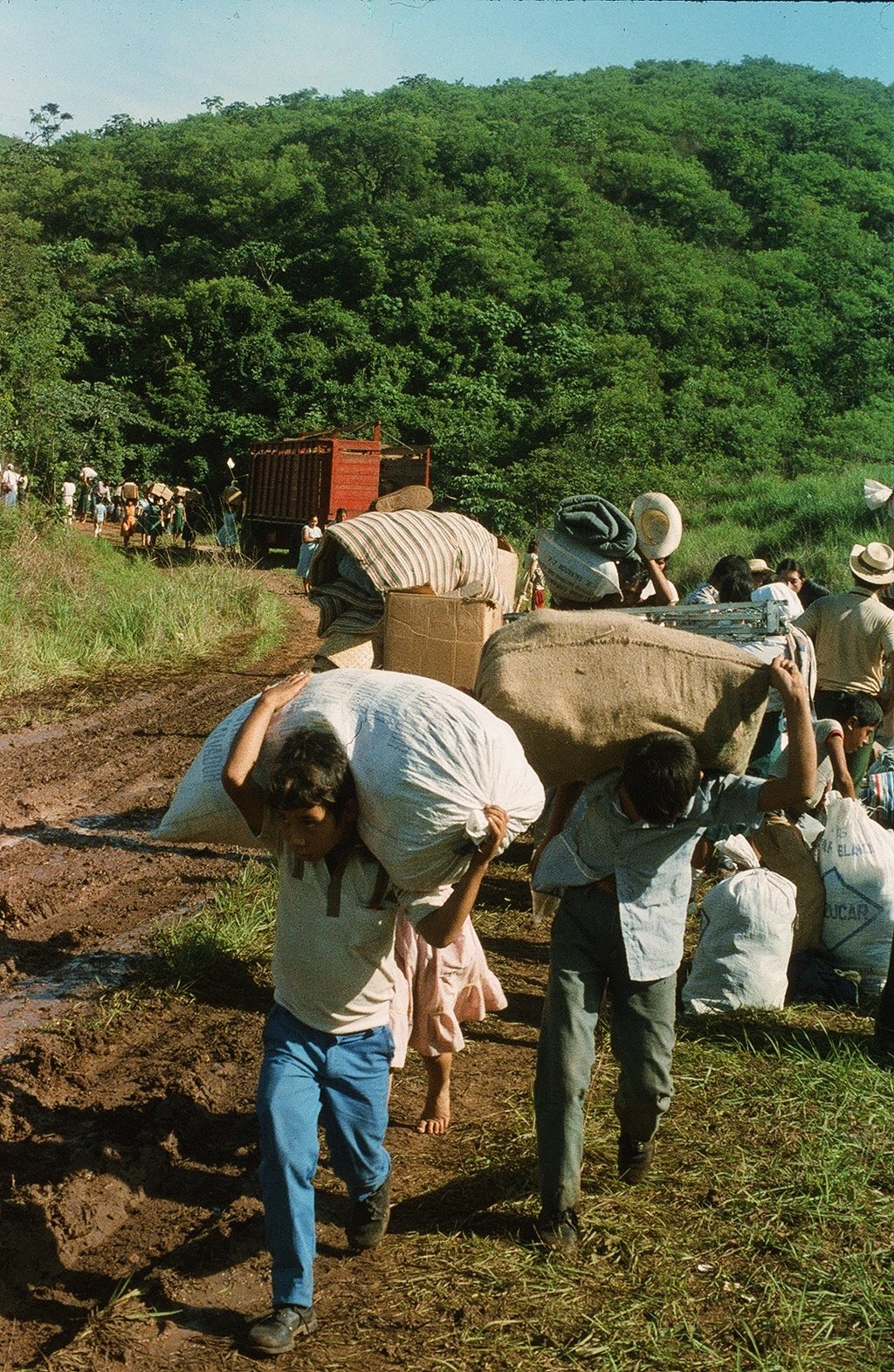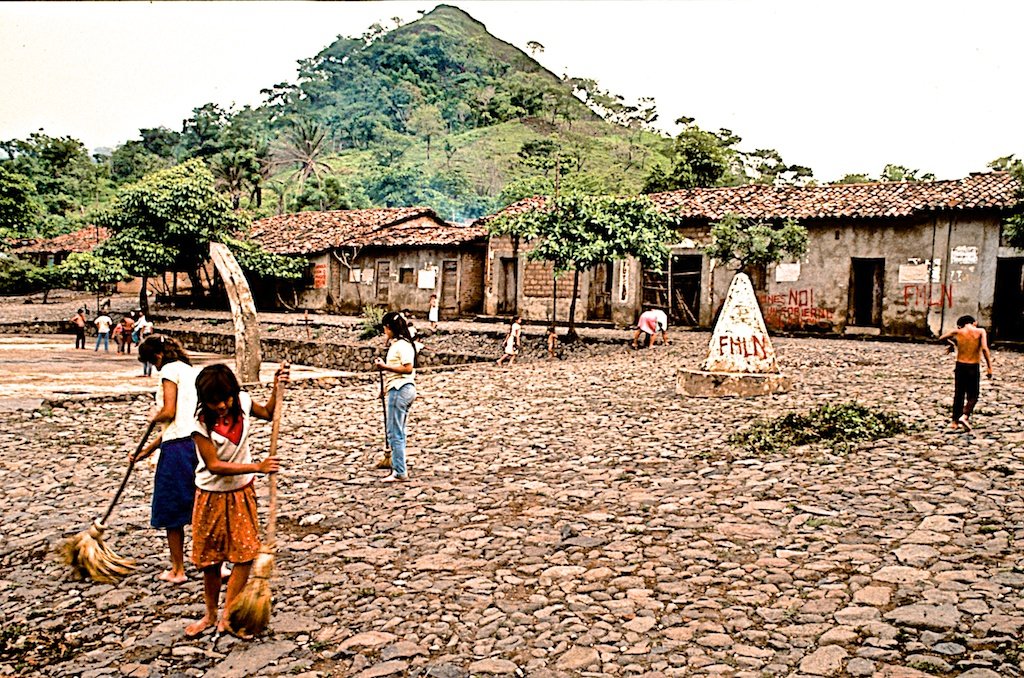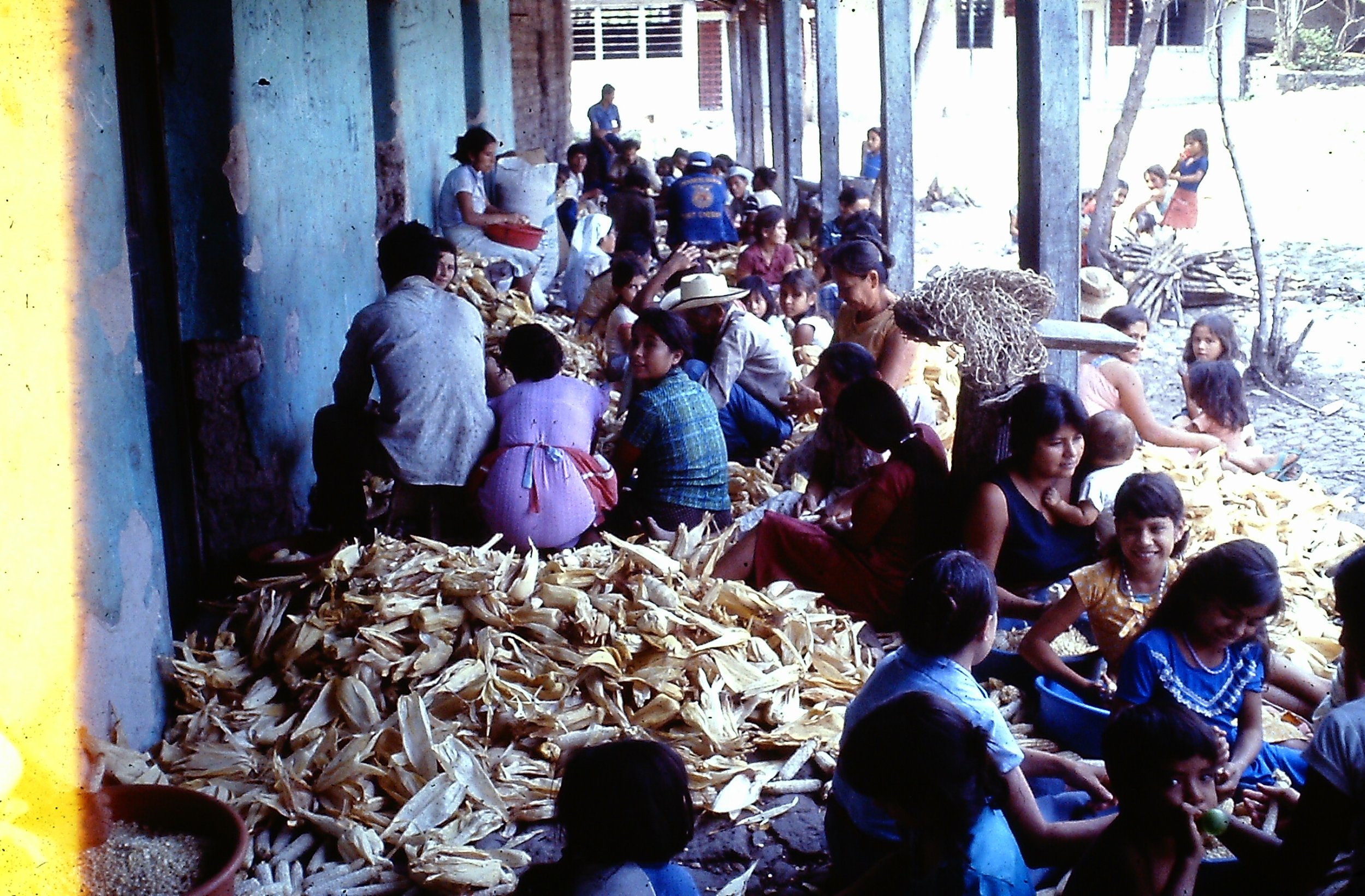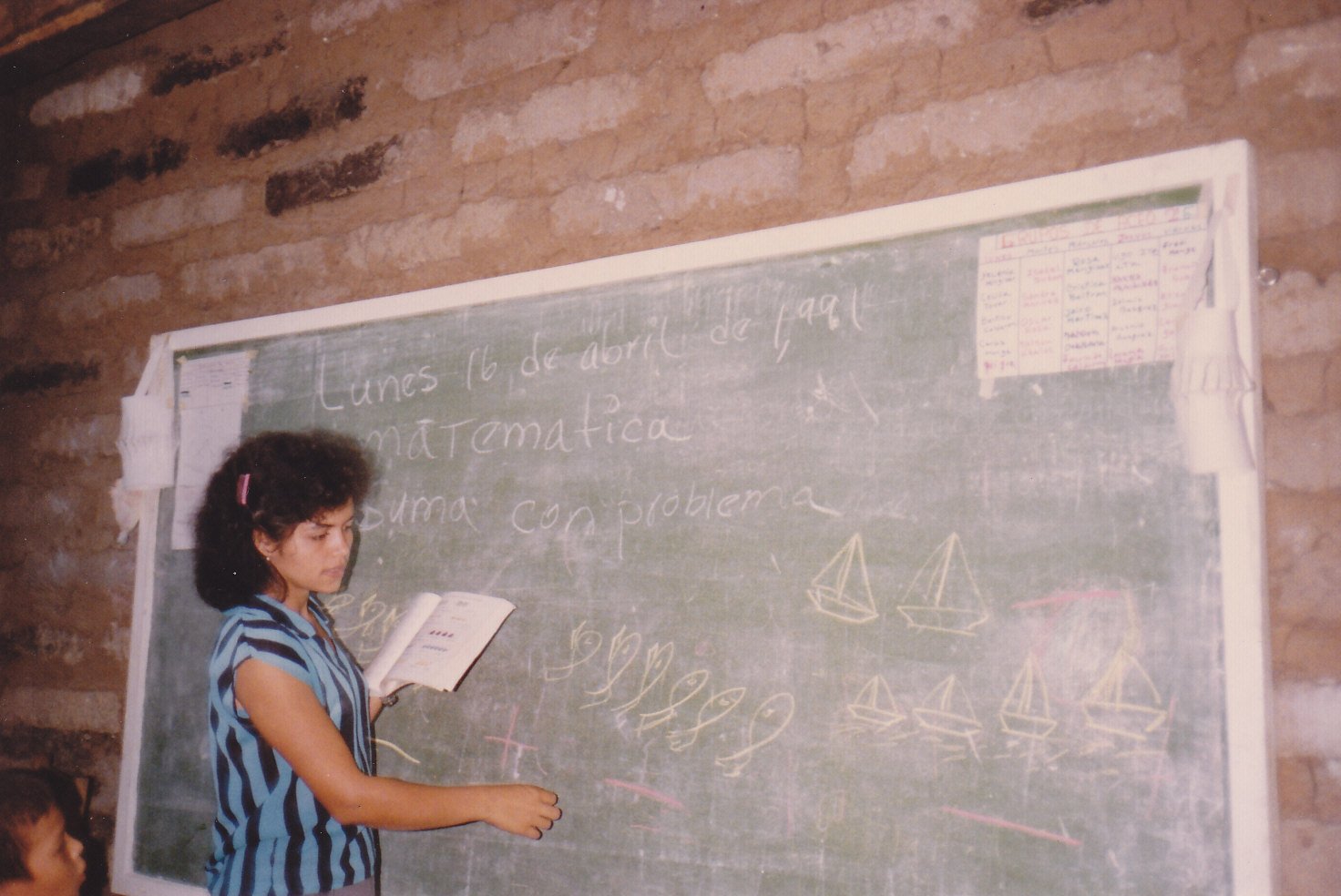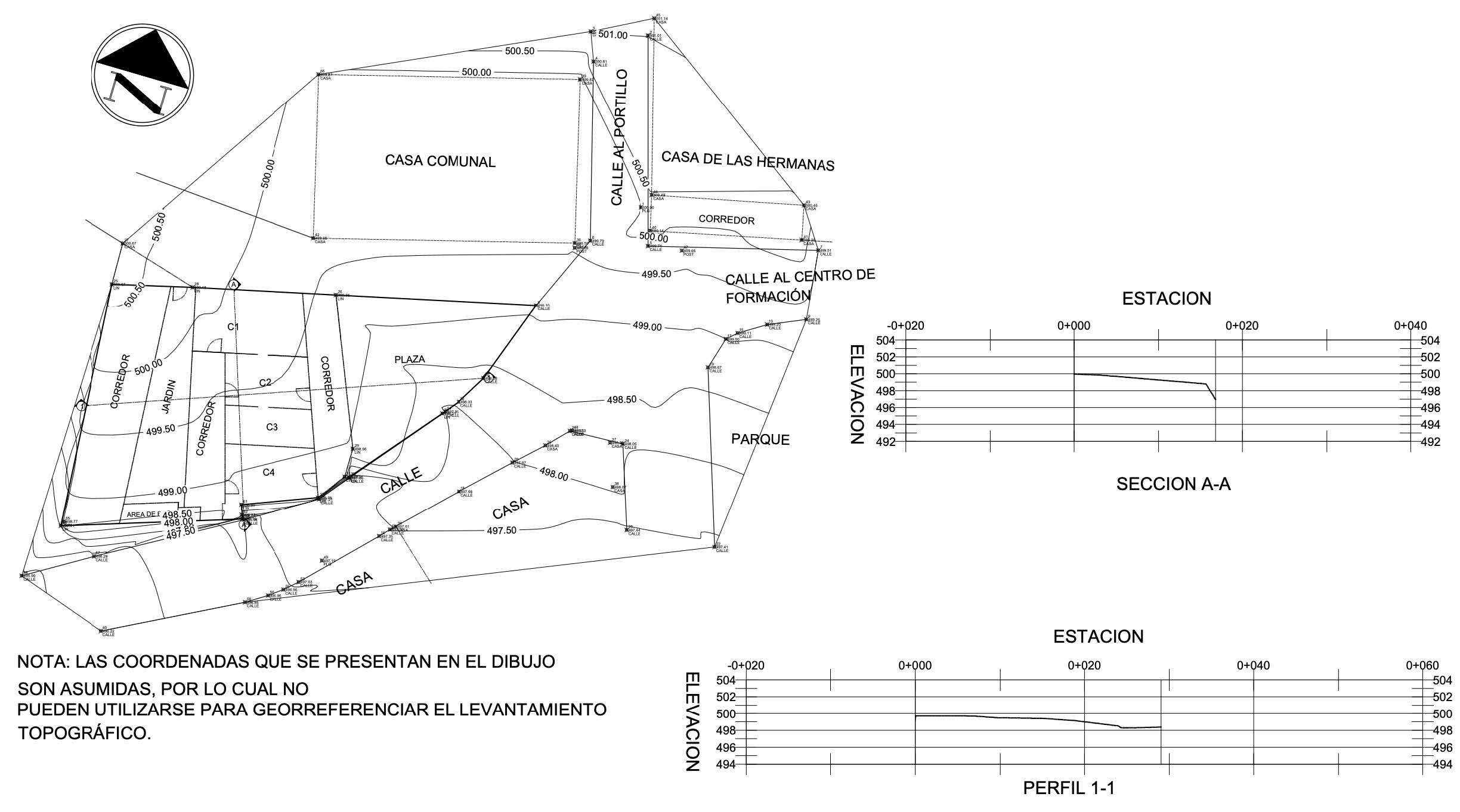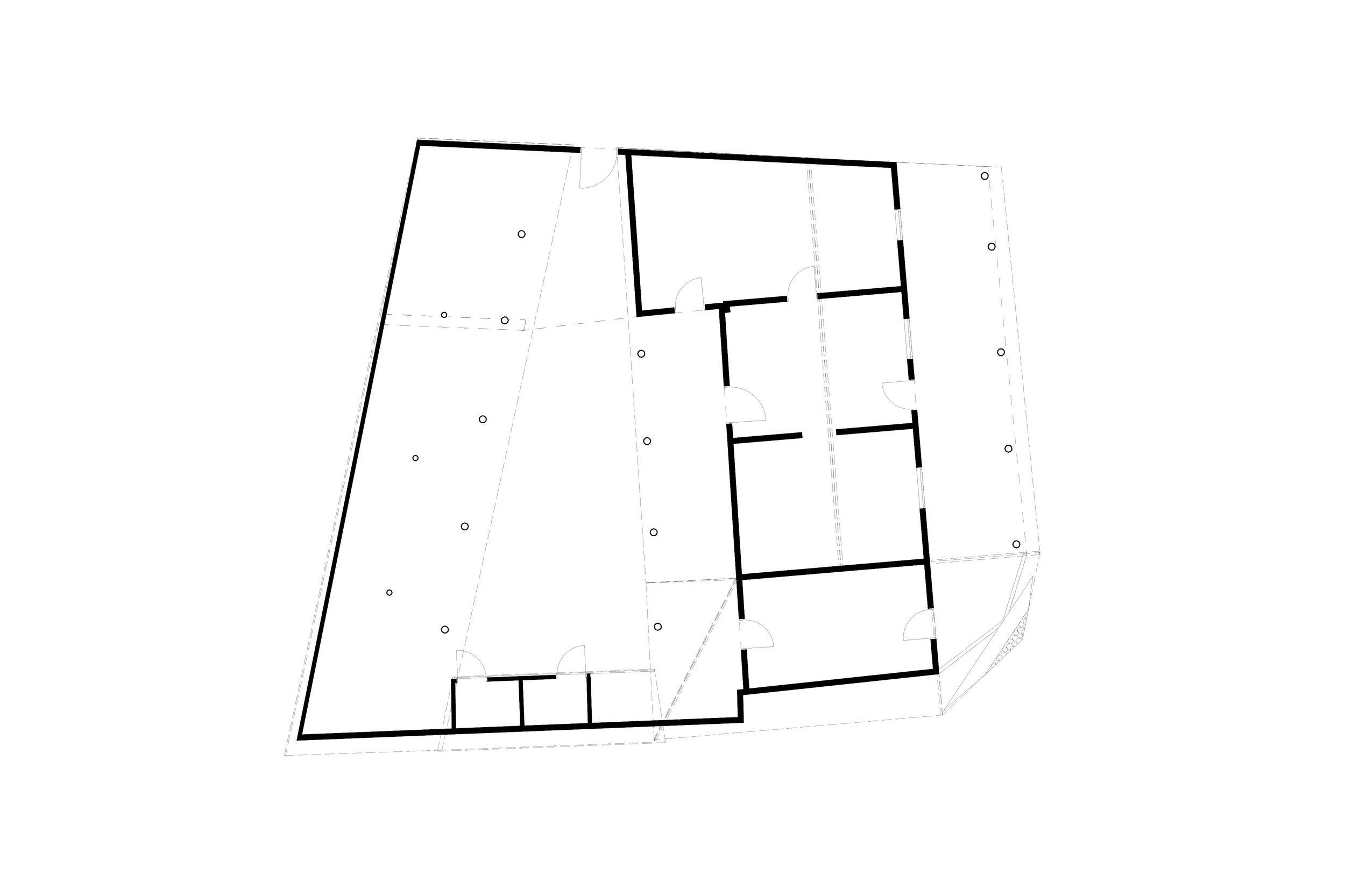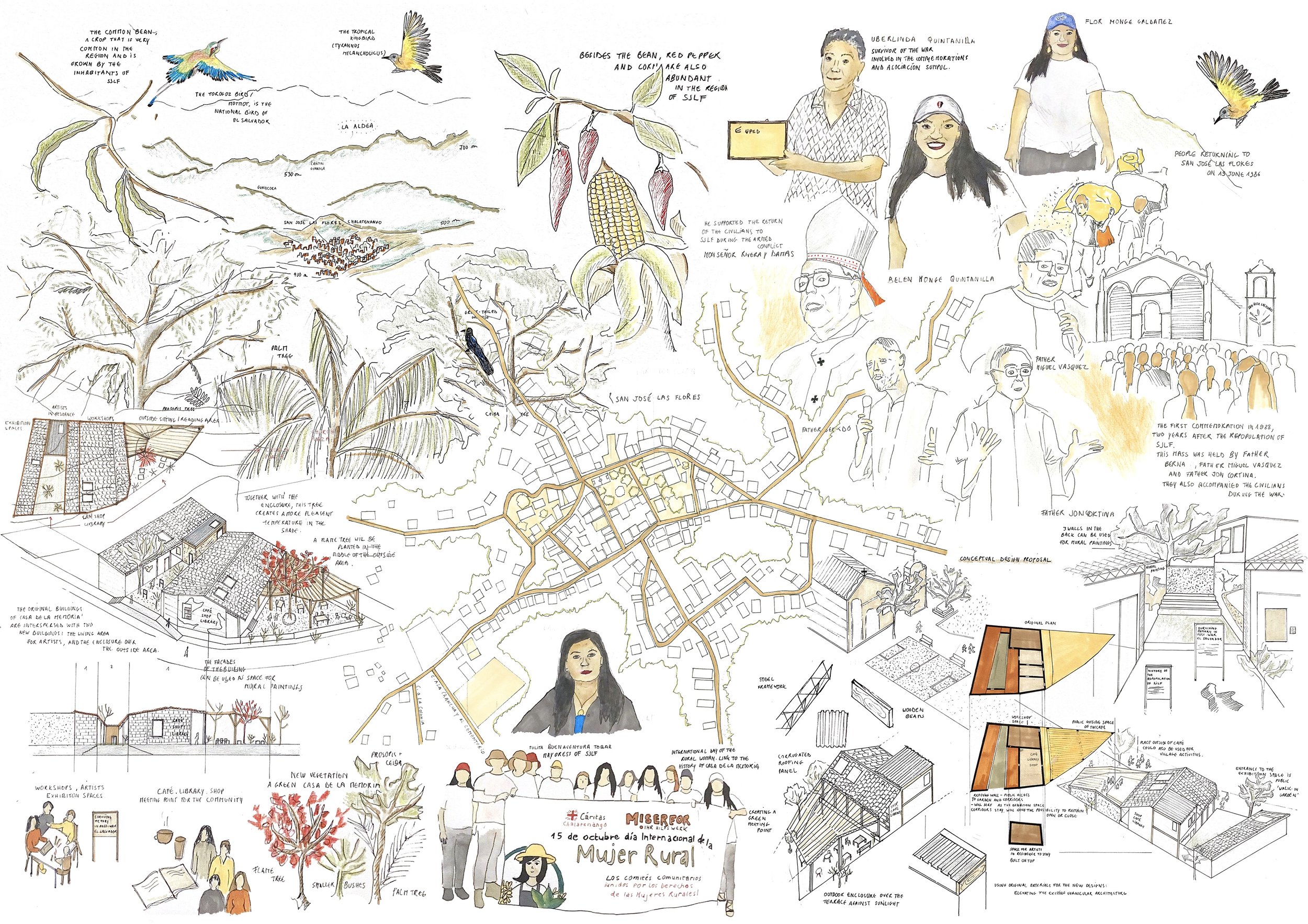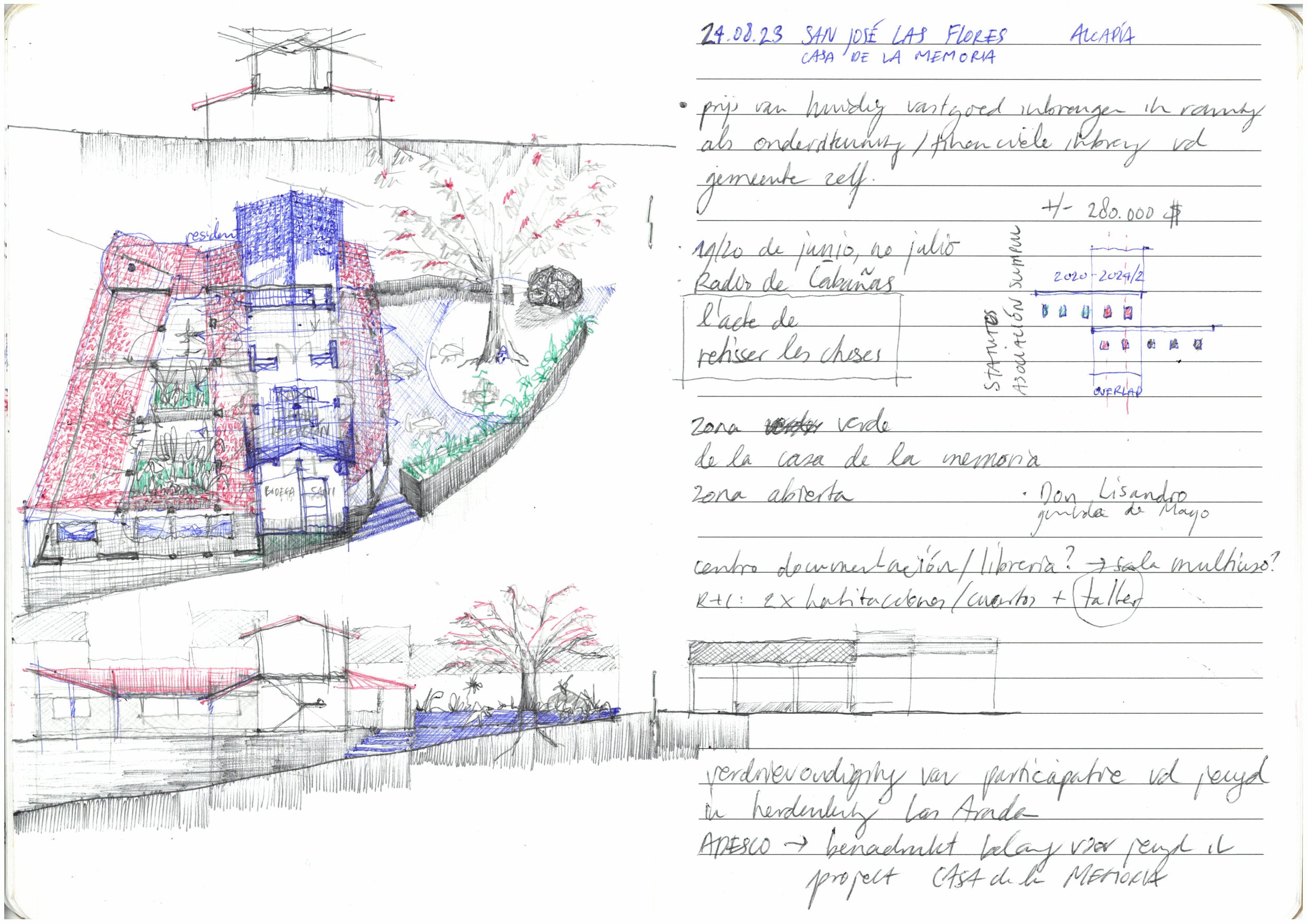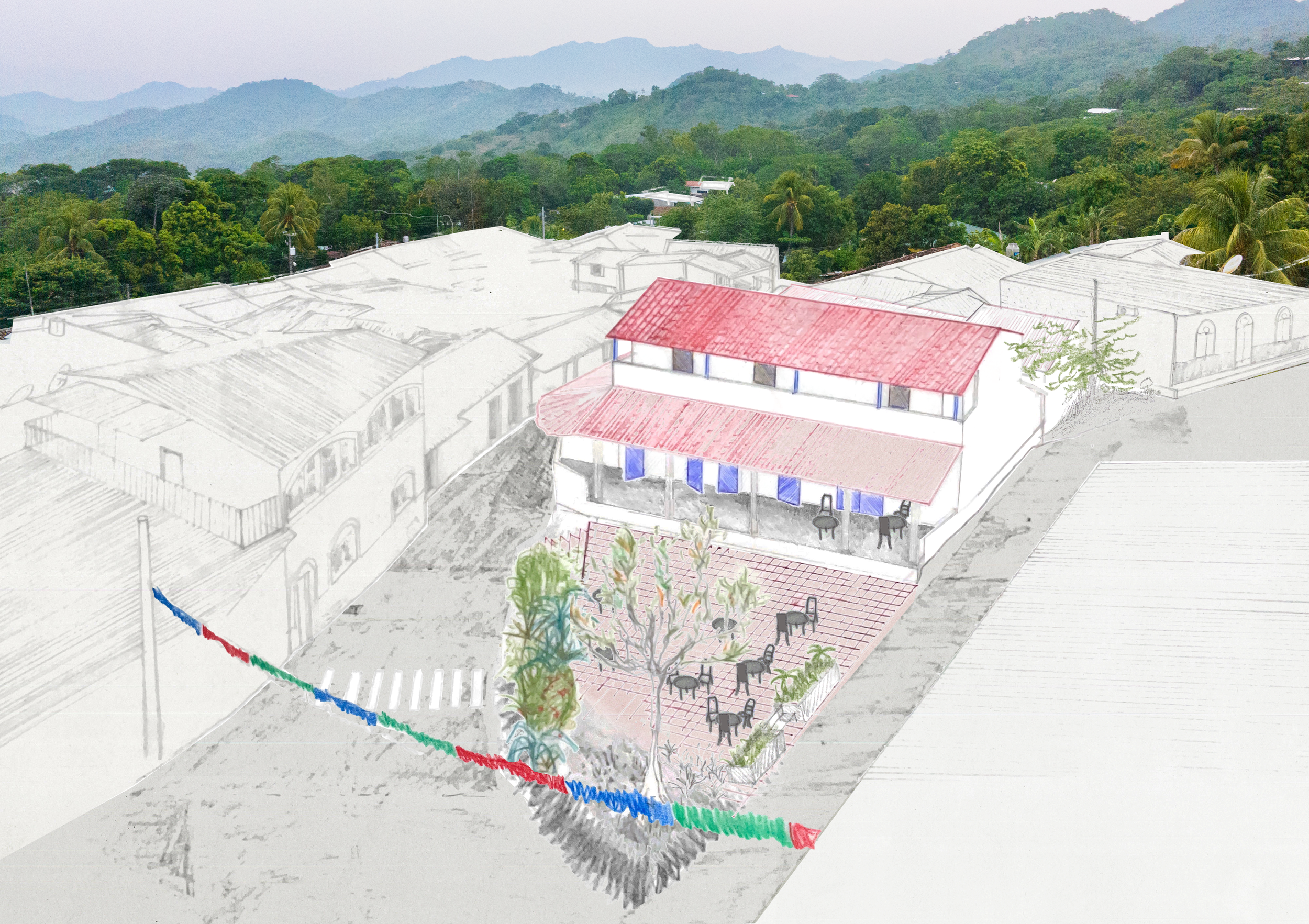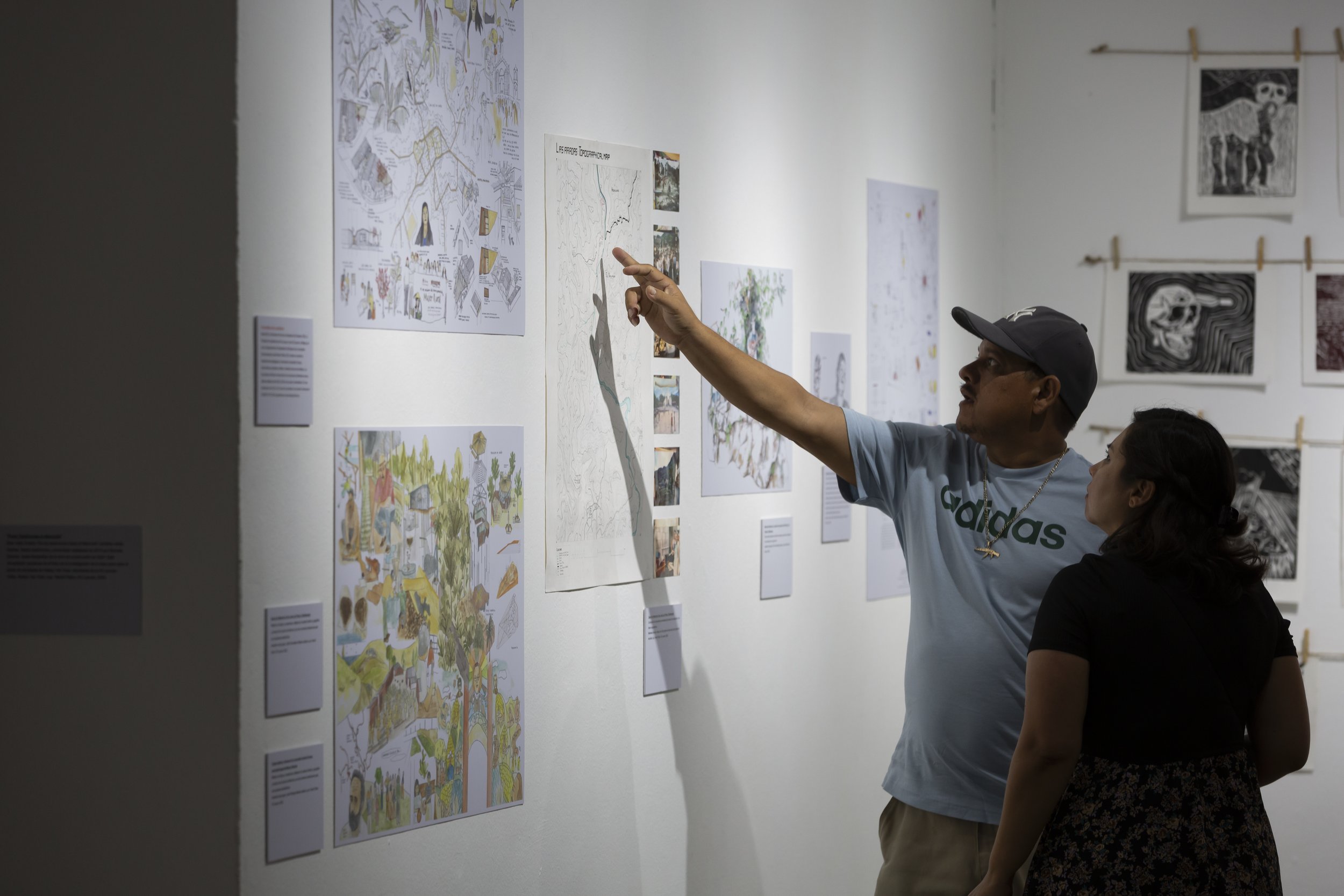San José Las Flores Casa de la Memoria
A Space for Memory, Creation, and Socialization
The Casa de la Memoria in San José Las Flores is an ambitious project dedicated to preserving the community's historical memory and fostering cultural expression in Chalatenango, El Salvador. Rooted in the collective experiences of survival and repopulation during the civil war, this initiative will transform a modest one-story building into a vibrant place that honors the past, addresses present topics, and inspires future generations.
Located near the town’s central park, the Casa de la Memoria will feature exhibitions, cultural activities, workshops, and a café and shop selling locally crafted products, stimulating the local economy and serving as a dynamic meeting place for the community. As a member of the Red de Museos Comunitarios de Memoria Histórica Chalatenango [Chalatenango Historical Memory Community Museums Network], the Casa de la Memoria will connect with a network of regional museums, amplifying its impact and reach.
Beyond its role as a museum, the Casa de la Memoria will support artistic creation through residencies for artists and versatile spaces for performances and exhibitions. It stands as a tribute to resilience and a commitment to community cohesion and cultural exchange, ensuring the legacy and lessons of San José Las Flores continue to thrive and inspire.
Initial Ambitions
In January 2023, Asociación Sumpul [Sumpul Association] organized a meeting between the Comité de Memoria Histórica de San José Las Flores [Historical Memory Committee of San José Las Flores] represented by Belén Monge, Flor Monge, Tulita Tobar, and Uberlinda Quintanilla, and the team of researchers and architects from the Surviving Memory in Postwar El Salvador project.
In San José Las Flores, besides the current museum located at the riverside tourist center of the Río Sumpul, there is a plan to create a new Casa de la Memoria in the urban center in an existing building owned by the Community Development Association (ADESCO).
The future Casa de la Memoria in San José Las Flores, Chalatenango, will be located in a one-story building with a porch facing a plaza next to the town's central park. It consists of two parallel wings separated by an interior garden. The house is owned by the ADESCO, an entity that promotes community development. The house and its plaza are situated next to the central park, which also borders the church, the municipal hall, several shops, a community activity center, a sewing cooperative, and a senior citizens' home.
This space will not only host exhibitions but also various cultural activities such as lectures, film screenings, readings, and events for children and young people. With the aim of becoming an informal meeting point, a café and a shop selling locally produced handicrafts are planned.
To further enrich the cultural atmosphere, there is a possibility of including an apartment for guests or artists-in-residence, turning the Casa de la Memoria into a place for cultural production. This approach seeks to promote creativity and the exchange of ideas, making the Casa de la Memoria a vibrant and dynamic cultural center for the community and visitors.
In addition to remodeling the building, there is an ambition to remodel the open space in front of the Casa de la Memoria, which currently serves as a parking lot. The plan is to transform it into a green space, planting trees to give more presence to the café and the activities taking place there. This remodeling will not only revitalize the public space but also create a welcoming environment conducive to social interaction.
This will strengthen the importance of the Casa de la Memoria as a meeting and reflection point for the community and visitors while promoting the local economy through the shop and café.
Commemorating Repression and Repopulation
In addition to the massacres and other forms of violence perpetrated against the civilian population during the civil war in the region, commemorating the repopulation of San José Las Flores is crucial because it represents the community's will to assert its right to exist and develop a common project despite the repression suffered. It goes beyond remembering the events in which members of the civilian population were victims; it also involves recognizing their struggle to be a community on their own land.
Repopulation during the civil war involved the return and reorganization of communities that had been forced to abandon their homes. Despite the adversities and obstacles they faced, these communities demonstrated extraordinary determination and resilience by asserting their right to exist and live on their ancestral lands. Repopulation was not only a response to the violence suffered but also an affirmation of their collective identity and their connection to a territory.
Commemorating the repopulation highlights the courage and resilience of these communities, as well as their ability to overcome adverse conditions and rebuild their lives. It is an act of recognition and appreciation of their struggle to keep their culture, traditions, and way of life alive despite attempts at annihilation and forced displacement.
Repopulation also involves the development of a common project based on solidarity, collaboration, and community strengthening. These communities came together to rebuild their homes, rehabilitate infrastructure, establish production systems, and organize to ensure their safety and well-being. Commemorating repopulation recognizes and celebrates these collective efforts, highlighting the importance of building a resilient and united community.
In summary, commemorating repopulation during the civil war goes beyond remembering the atrocities suffered by the civilian population. It is an act of recognition and appreciation of their struggle to assert their right to exist and develop a common project on their land. It highlights their resilience, solidarity, and ability to rebuild their lives, reaffirming their collective identity and strengthening the community fabric for the future.
History of the Repopulation
The text of this section is based on the testimony of Felipe Tobar, a community leader, survivor of several massacres and a member of the group that repopulated San José Las Flores. It was orginally broadcast on Radio Victoria of Cabañas and Radio Farabundo Martí of Arcatao. Chalatenango. Don Felipe extends special thanks to Fathers Jon Cortina, Miguel Vasques, Nicolás Alvarenga, Hermanas Teresa and Olimpia (Nuns of the Religious of the Assumption order), and Padre Tilo Sánchez, who accompanied the civilian population during the war:
San José Las Flores was the first municipality to be repopulated in El Salvador during the civil war. Between 1979 and 1986, the civilian population gradually abandoned their homes due to repression and scorched-earth military operations. In January 1986, Archbishop Rivera y Damas of the Archdiocese of San Salvador visited San José Las Flores and publicly confirmed that it was a civilian population, not a guerrilla camp.
The repopulation of San José Las Flores began in 1986 amid successive military operations. In March 1986, the military operation "Teniente Chávez Carreño" was carried out, involving all elite battalions of the Salvadoran Armed Forces and various garrisons across the country, with approximately 16,500 troops over 90 days. This scorched-earth operation aimed to eliminate the civilian population, resulting in the loss of many family members of the repopulators under these circumstances.
In this context, a large group of civilians was captured and concentrated in the Church of Dulce Nombre de Maria, then taken to Military Detachment No.1 (DM1). Another group was captured in the municipalities of San Isidro Labrador and San José Cancasque and later taken to the Presa 5 de Noviembre. Thanks to national and international pressure from human rights organizations such as the national and international Red Cross, the Catholic Church, the Lutheran Church, and others, the captives were transferred to the shelters of La Basílica, Calle Real, and Domus Maria, located in Ciudad Delgado and Apopa, near San Salvador. There, the population organized to demand their return to Chalatenango and recognition of their status as civilians, choosing San José Las Flores as their final destination. They set out after a mass at the San Salvador Cathedral on July 19, 1986.
Between July 19 and 20, they arrived in Guarjila and continued on foot to San José Las Flores, as buses could not cross the Quebrada Honda. They passed through military checkpoints in Colima, where they were subjected to interrogations for three hours, as well as in the 4th Infantry Brigade and Military Detachment No. 1 in Chalatenango. Ultimately, they overcame these obstacles and reached San José Las Flores, thus achieving the first repopulation of the country amid armed conflict. These 26 families from the shelters were met in San José Las Flores by another group of repopulators with food and some small houses that had been repaired to provide them shelter for the night. It is important to remember that the entire town had been destroyed and abandoned since 1979.
A delegation from the United States and a Church team, as Archbishop Rivera had promised, remained in San José Las Flores. Little by little, families from El Tamarindo, El Portillo del Norte, El Conacaste, Los Amates, Cinquera, Guazapa, and the municipalities of Tejutepeque and Jutiapa joined the repopulators of San José Las Flores.
The repopulation of San José Las Flores was the result of immense struggle, sacrifice, organization, and solidarity from the Catholic Church, the Lutheran Church, CRIPDES, the sister city of Cambridge in Massachusetts, as well as solidarity from organizations in Canada, Spain, Germany, and Belgium, who collaborated in this effort and the subsequent development of San José Las Flores.
Detailing a Possible Program
In August 2023, these texts and the detailed program for the Casa de la Memoria were discussed with the community. Together with the photographic survey and the plans for the existing situation realized by Roberto Urbina, they would form the base for the first design reflections. The Casa de la Memoria is defined as a complement to the Museum of Historical Memory. Geographically, it is located in the town center. Programmatically, it focuses on its role in socialization and is positioned in the network of museums in Chalatenango as a space for artistic creation.
Creating a café with a terrace in the public plaza: The objective is to reclaim the public space in front of the house, currently used as parking, and beautify it by planting trees.
Reading Area and Documentation Center: The reading area and documentation center will focus on the community's history, addressing various relevant topics. The experiences of the civilian population during the civil war will be explored, including their struggle for survival, forced displacement, and resilience in community building. Additionally, contemporary issues impacting the community, such as migration, agriculture, economy, and environment, will be analyzed. Aspects of broader history, including ancestral culture, will also be incorporated to provide a more complete and enriching context.
Multipurpose space for activities and exhibitions: Synergies will be sought with Surviving Memory in Postwar El Salvador’s Oral History and Documentation field lab, equipped with computers and audiovisual materials. Workshops on photography and image archiving will be conducted in collaboration with the Surviving Memory team. The lab is supported by funding from the Canadian Foundation for Innovation, the Ontario Research Fund, and Western University.
Café and shop space with storage and visibility from the public space: This area will offer café services and a shop with products related to historical memory. It will also include storage and serve as a meeting point for the community and visitors. The café and shop can operate even when there are no activities at the Casa de la Memoria.
Space for invited artist residencies: An artistic creation workshop and accommodation will be provided, including a bedroom, bathroom, and kitchen. This space will allow for hosting guest artists, fostering cultural production and the exchange of ideas. Residents will have independent access to the shop, café, and documentation center.
Possibility of constructing a second floor: There is consideration for expanding the house by constructing a second floor on part of the house, which would increase the capabilities and possibilities of the Casa de la Memoria.
Initial Reflections by Students and Architects
Between August 2023 and June 2024, architecture students from KU Leuven Faculty of Architecture (Judith Grondelaers, Paramvir Singh, Milosz Kazula, Kelsey Van Oost, supervised by Professor Harold Fallon), in collaboration with the introductory research methodologies course of the Department of Space Organization led by Professor Alexander Renderos and Karina Mora, began preliminary sketches, particularly regarding the green space in front of the house, its relationship to the public space, and the extension of the house with a second floor.
Three main conclusions emerged from these student works:
Firstly, the Casa de la Memoria, despite being of moderate quality construction, has historical value because it was rebuilt by the community during the repopulation era. The scarcity of resources resulting from that precariousness produced a very simple construction, balanced with a suitable rural typology, with porches and an interior courtyard. It will be important to value this quality and avoid invasive intervention.
Secondly, it does not seem appropriate to include an accommodation space in the artist residency project, as San José Las Flores already has several spaces providing this service (Training House, Reyes Guardado Cottages, the Surviving Memory in Postwar El Salvador field office, among others). It would be more interesting for artist residencies to facilitate exchange and complementarity in San José Las Flores rather than weaken the existing infrastructure.
The side façade of the Casa de la Memoria (south side) is very closed and informal, although it benefits from an interesting view. It would be worthwhile for the design to focus on requalifying this part of the house.
Beyond these points of attention for a future project, the research highlights that the Casa de la Memoria requires only small interventions to facilitate a basic program. For example, addressing the functionality of the bathrooms, the lack of water and light, the maintenance of the interior courtyard, and the repair of minor construction defects can be prioritized to quickly start organizing activities, exhibitions, etc.
These conclusions form the basis of the design work starting in September 2024.
As the architecture course collaboration, “Surviving Memory in Postwar el Salvador,” run jointly at KU Leuven Faculty of Architecture and José Simeón Cañas Central American University’s Department of Space was awarded the Uniservitate Award for Service Learning in 2024, the awarded amount will possibly be used in 2025 to organize a joint community workshop in San José Las Flores to mount an exhibition and start a first occupation of the Casa de la Memoria.
Team
Local Project Coordinators: Belén Monge, Flor Monge, Tulita Tobar, Uberlinda Quintanilla
Architecture: AgwA + Evelia Macal: Harold Fallon (AgwA, KU Leuven), Evelia Macal, Thomas Montulet (AgwA, UCLouvain), Nomundari Munkhbaatar (AgwA), Roberto Urbina
With thanks to the participating students as part of their curriculum.

